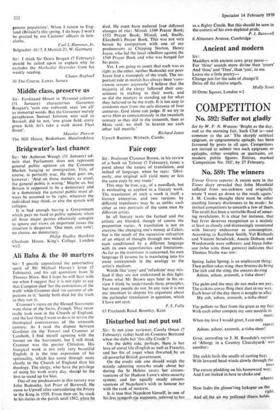Fair copy
Sir: Professor Clarence Brown, in his review of a book on Tolstoy (7 February), raises a point about the nature of translation, and indeed of language, when he says: 'Obvi- ously, one original will yield more or less the same copy by any route.'
This may be true, e.g., of a newsflash, but is misleading as applied to a literary work. The translation of such a work is itself a literary enterprise, and two versions by different translators may be as unlike each other as two portraits of the same man by different artists.
In all literary texts the factual and the artistic are blended, though of course the proportion varies. A translation is not an exercise like changing one's money at Calais, but is the result of the successive refraction of an object of thought through two minds, each conditioned by a different language with its own opportunities and limitations. As far as the translator is concerned, his own language (I assume he is translating into his own) corresponds in the analogy to the artist's medium.
Words like 'copy' and 'refashion' may mis- lead if they are not understood in this light. From what Mr Brown says later in his re- view I think he understands these principles, but many people do not. In any case it is not my intention to dispute his argument about the particular translation in question, which I have not seen.


































 Previous page
Previous page